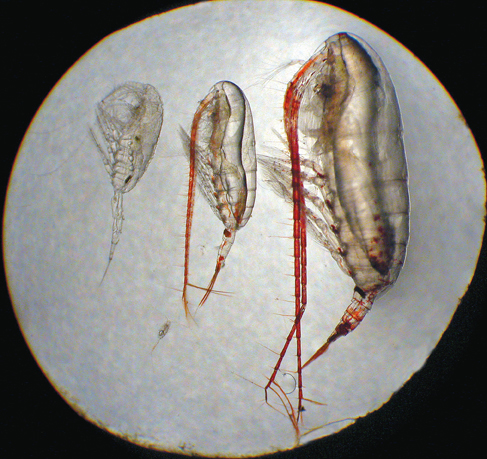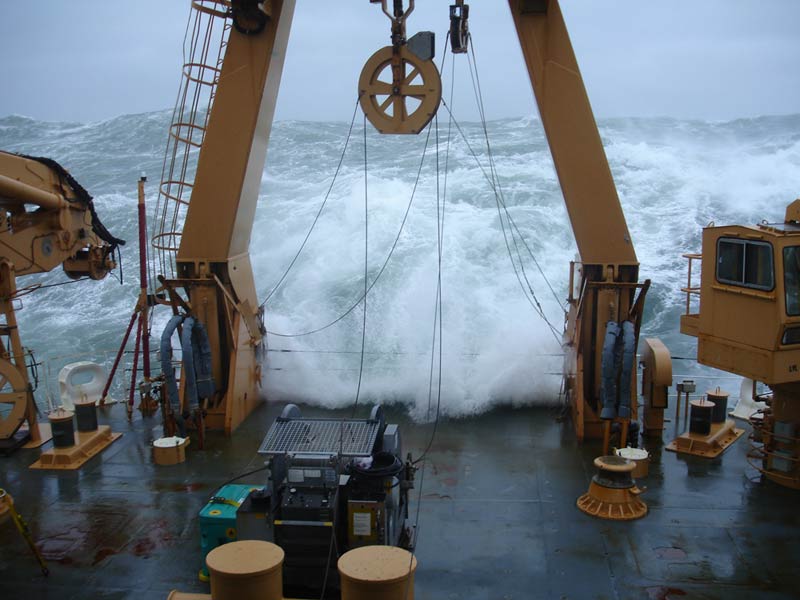
Arctic Seas Surprisingly Alive in Winter

Even in the permanent twilight of Arctic winter, polar seas teem with teeny life, a surprise to the researchers who recently returned from one of the first expeditions ever to venture into roiling Arctic seas in wintertime.
Scientists and crew spent 40 days aboard the research vessel Healy, a 420-foot-long (128 meter) icebreaker capable of plowing through sea ice 8 feet (2.5 m) thick, trolling northward through the Bering, Chukchi and Beaufort seas.
While the scientists' vessel was impressive, their quarry was tiny: crustaceans called copepods that range in size from about a grain of salt to a grain of rice.
Copepods of the genus Calanus make up a huge proportion of the region's life-sustaining zooplankton — the preferred snack of a huge range of animals, from Arctic cod to right whales, and a crucial link in the Arctic food chain.
It was thought that during the semi-darkness of winter, with the resulting scarcity of ocean plant life, the teeny copepods drop into a semi-dormant state called diapause, during which they don't eat or grow.
"We were surprised that they appeared to be active," said Carin Ashjian, chief scientist on the cruise and a biologist at Woods Hole Oceanographic Institution in Massachusetts.
Biggest shock
Sign up for the Live Science daily newsletter now
Get the world’s most fascinating discoveries delivered straight to your inbox.
In fact, Ashjian said, the level of biological activity glimpsed beneath the icy waves was the biggest shock of the expedition.
"We were most surprised by how active the ecosystem continued to be despite the low light conditions," Ashjian told OurAmazingPlanet in an email. Not only were Calanus copepods and other zooplankton active and feeding, but thriving phytoplankton — tiny, single-celled plants that form the foundation of the ocean food chain — were found in the water samples that were pulled up.
"The phytoplankton were present in low abundance," she said, "but many of them appeared to be healthy and full of chlorophyll."
The expedition wrapped up Dec. 18, and Ashjian and fellow cruise scientists from WHOI, the University of Rhode Island and the University of Alaska Fairbanks are now hard at work analyzing samples back in their respective labs.

Arctic changes
Ultimately, Ashjian said, researchers are trying to get a better handle on how to model the ecosystem, which will allow scientists to better understand how changes among the Arctic's tiniest residents are correlated to larger changes in the region.
Despite the frigid conditions and grueling pace of life at sea — ship time is precious, and the team worked round-the-clock, with 12 hours on, 12 hours off for each — Ashjian spoke fondly of expedition life.
"It was very exciting," she said, "particularly to be going someplace and finding things that no one had seen before."
Reach Andrea Mustain at amustain@techmedianetwork.com. Follow her on Twitter @AndreaMustain. Follow OurAmazingPlanet for the latest in Earth science and exploration news on Twitter @OAPlanet and on Facebook.










